This is a continuation of the development of a simple, relatively foolproof, astigmatism, field curvature, and field tilt test for lens screening. The first post is here.
I wanted to see what happened if I did my test with a lens that wasn’t particularly sharp on a camera with a lower=resolution sensor and and an anti-aliasing (AA) filter. So I put a Sony 70-200 mm f/4 zoom on a Sony a9 body and set up 67 meters from my test target. I opened the lens to f/4. Images developed in Lr with default settings except for Daylight white balance, and exposure moves to approximately equalize the brightness of the target in the presence of lens fall off.
Note that my alignment with the target is deliberately sloppy.
Checking to see if the circle confusion (CoC) is small enough at 67 meters, we find that that is overkill, but we still need to get that far away to get the C-sized target small enough in the image. I may print a smaller target for these long-lens tests.
With the target in the center:
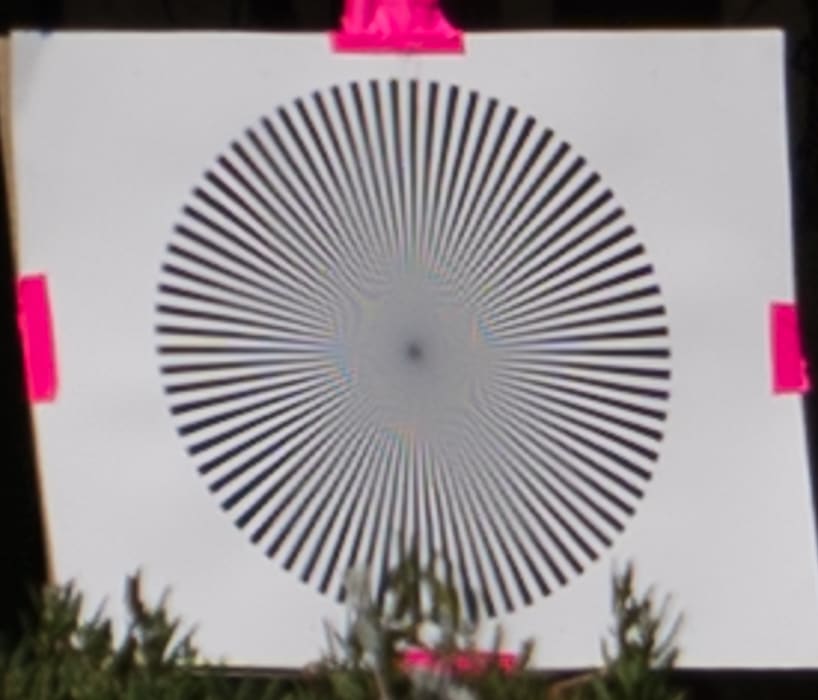
I made three series, focusing in the center for each one. I’m showing you the sharpest, but in truth, they were all about the same sharpness. It is clear from the above image that this is not the sharpest lens around at 200 mm wide open. There is almost no false color, and only a hint of aliasing at 10:30 and 4:30 if you think of the star as a clock face.
Running clockwise around the periphery starting with the target in the upper left:
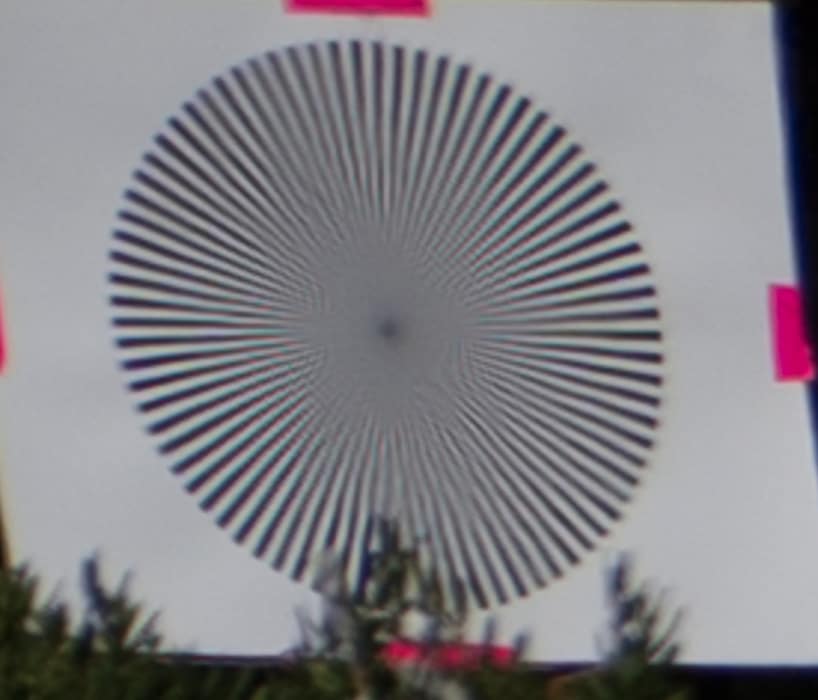
There is some funny stuff going on at 11:00. See below for more on that.
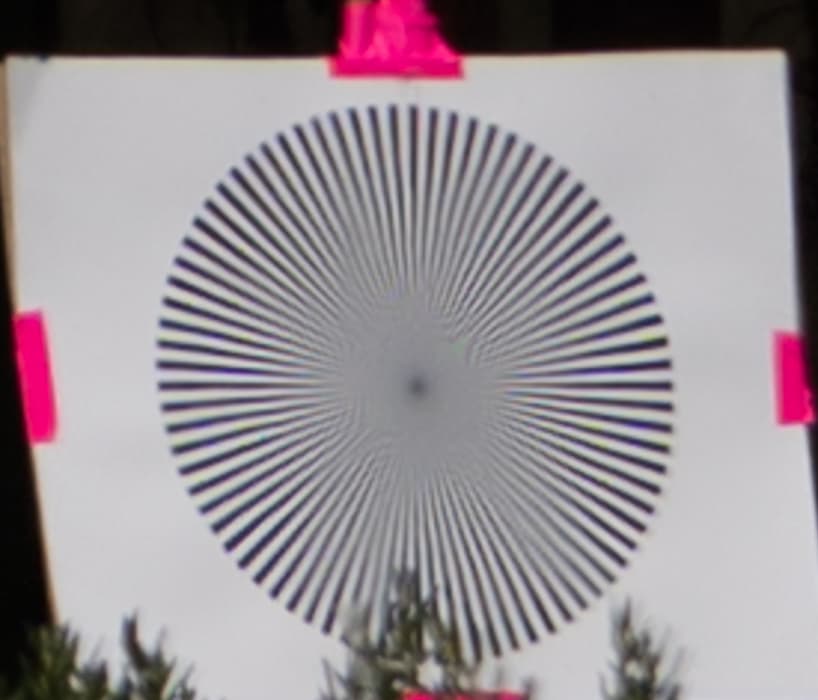
You can see aliasing at 2 and 8 o’clock.
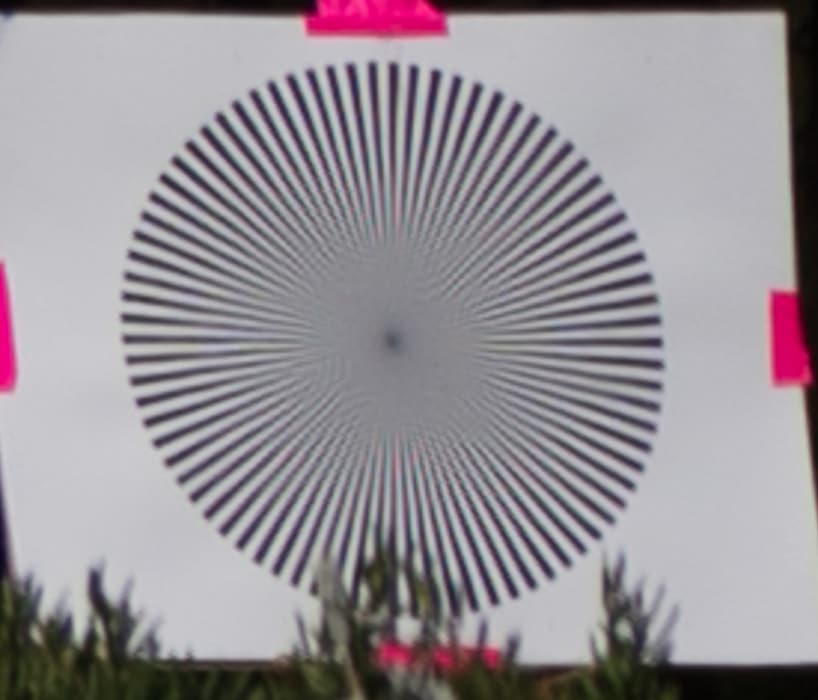
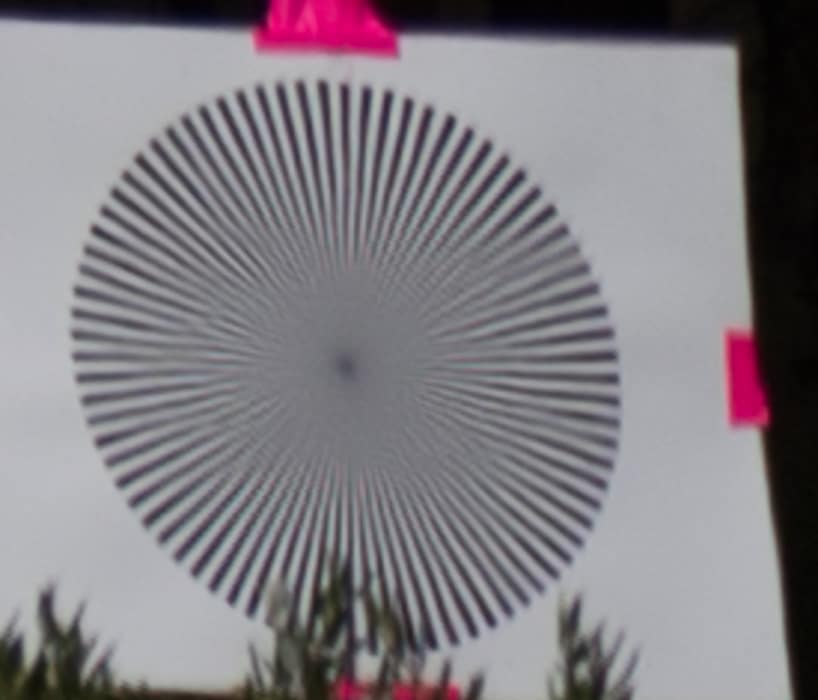
Note the way the lines converge faster or slower than they should in the above image as you move around the star. I’m not sure what that’s about.
Here’s a close-up, with the contrast increased and some of the weirder areas circled in red:
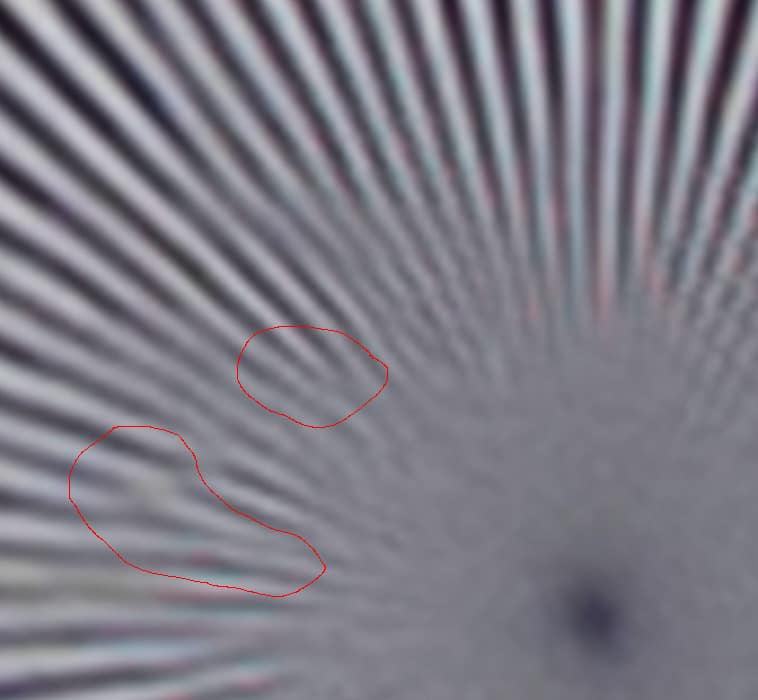
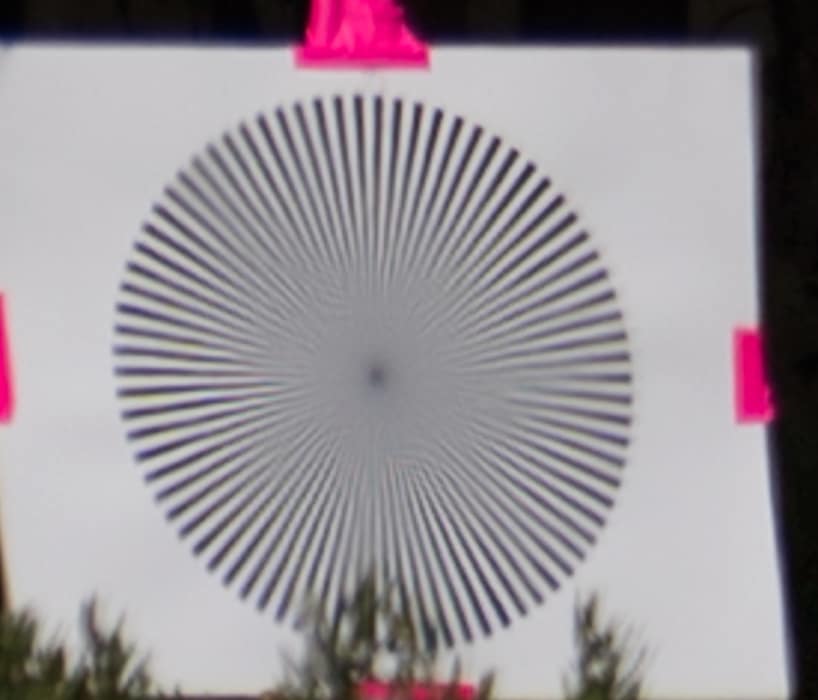
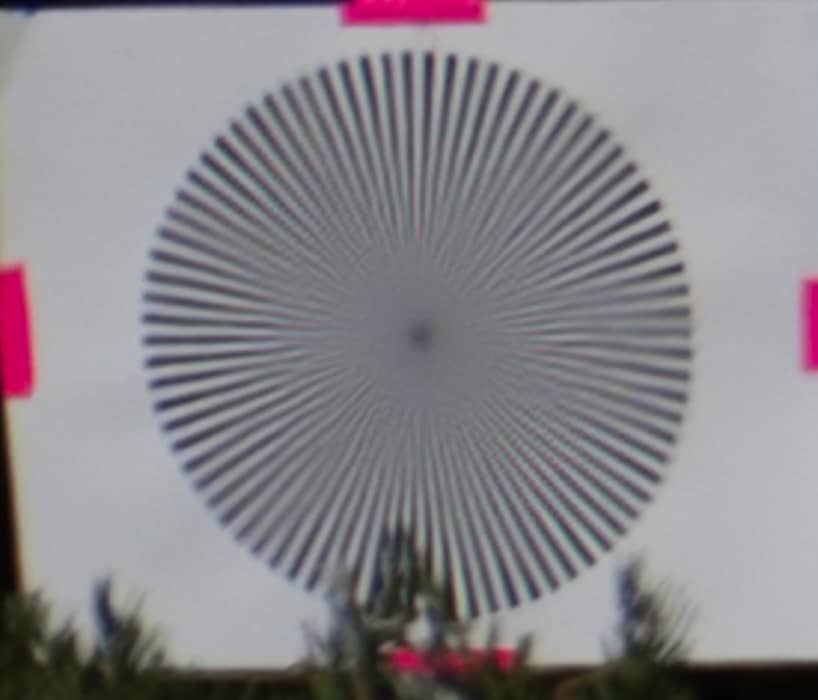
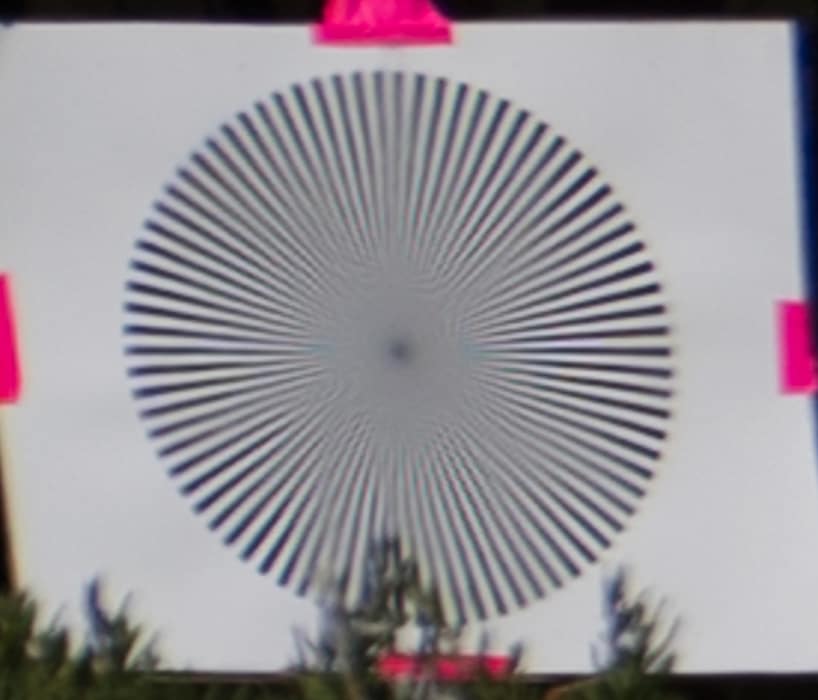
The lens is well aligned. The small asymmetric effects that you can see would have no bearing on normal photography. In some of the images, there is an odd more-rapid-than-usual convergence of some pairs of black radial stripes. Brandon Dube has an explanation for that in a comment to this post.

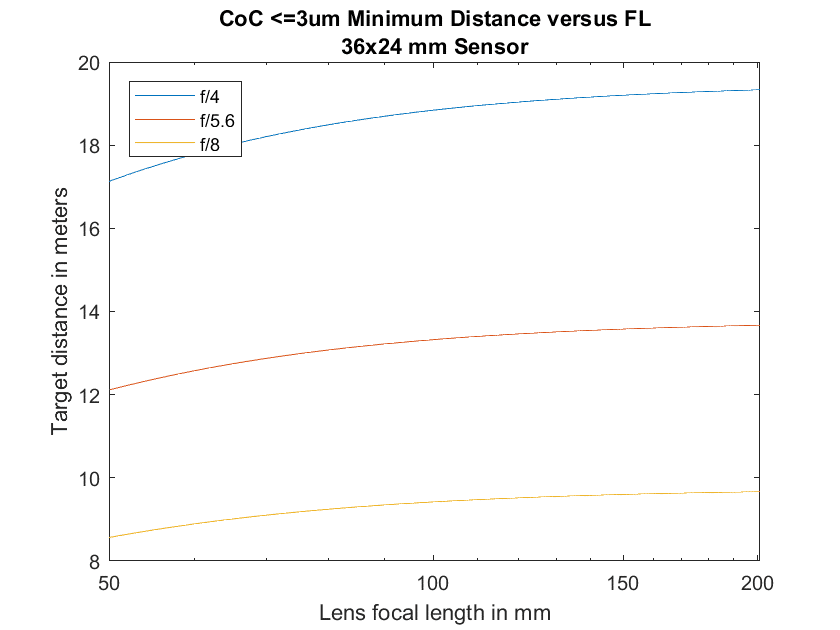
The funnybusiness in the lower left is probably the lens’ phase transfer function being oscillatory in the azimuthal axis (a mouthful, isn’t that?) Certainly very strange.
That looks like a good example of contrast reversal, what happens when defocus or an aberration causes the MTF (OTF) to go negative, see slide 14 here http://www.montana.edu/jshaw/documents/18%20EELE582_S15_OTFMTF.pdf
Jack
I have to say that those IBIS cameras are prone to another problem. I have found that the sensor of my A7rII was slightly tilted and all lenses were showing slight tilt effect on it whereas on my A7r it was all fine. So there is a possibility that many of the decentered sony lenses are not decentered it can be just the sensor is not mounted properly on the camera.